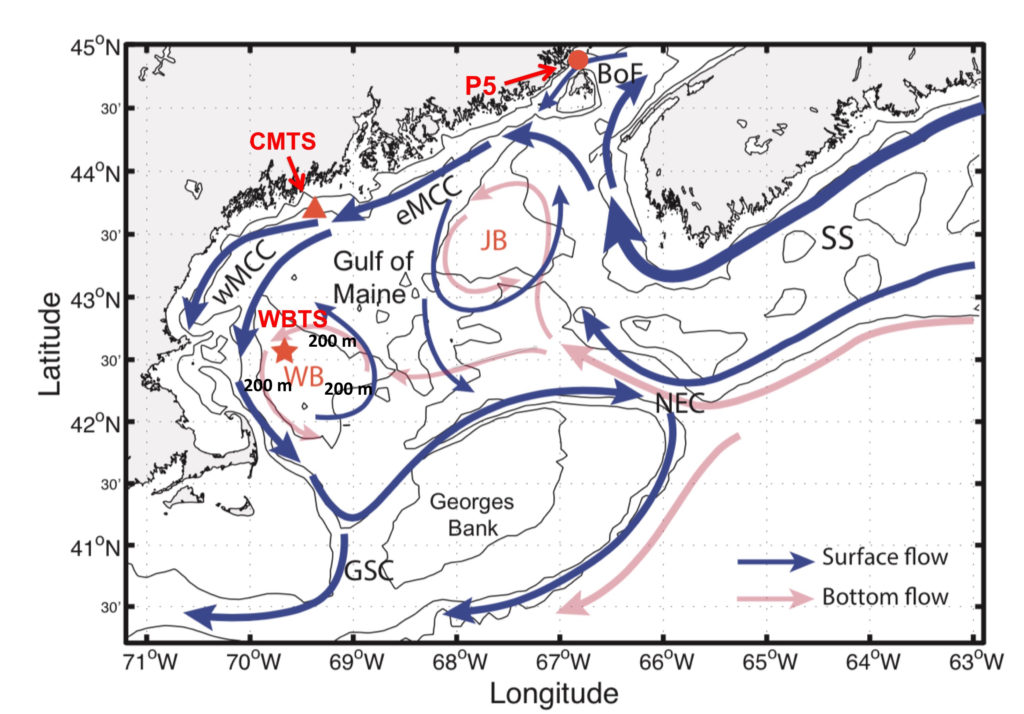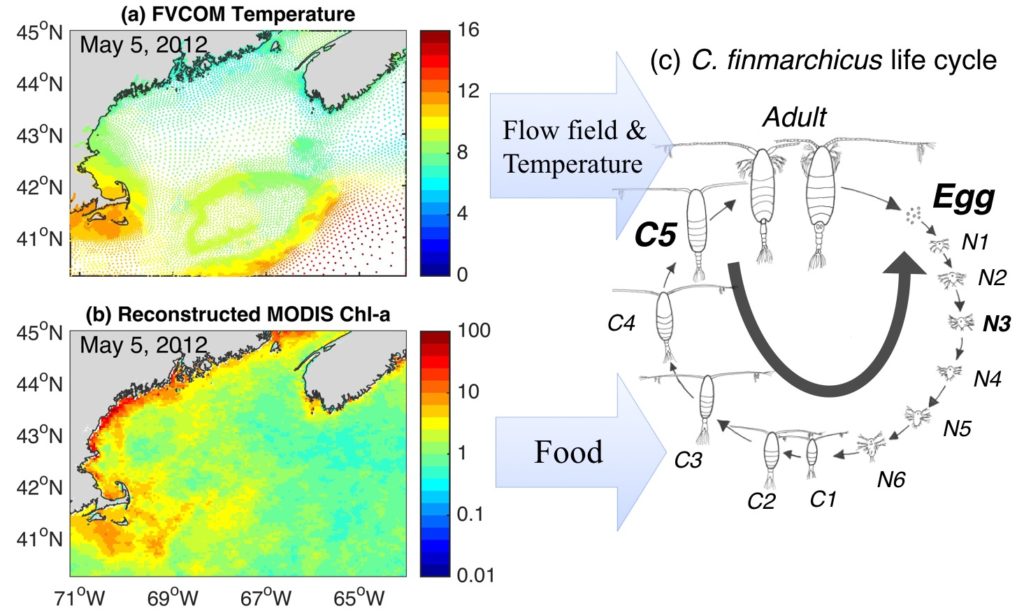Project #3: Mechanisms supporting persistence of a key plankton species during climate change on the Northwest Atlantic continental shelf

Fig. 1. Gulf of Maine geography and mean circulation, showing locations of three plankton survey stations: WBTS (Wilkinson Basin Time Series; red star marker), CMTS (Coastal Maine Time Series; red triangle marker) and P5 (Prince 5 from Canada’s AZMP program; red circle marker). BoF: Bay of Fundy; NS: Nova Scotia; SS: Scotian Shelf; NEC: Northeast Channel; GB: Georges Bank; GSC: Great South Channel; WB: Wilkinson Basin. Isobaths represent 50, 100 and 200 m.

Fig. 2. The offline model coupling between FVCOM and FISCM (see text for explanation of abbreviations). The FVCOM-simulated hourly flow fields are interpolated in the FISCM to obtain current velocities for Lagrangian tracking of C. finmarchicus individuals. FVCOM-simulated temperature and reconstructed MODIS chlorophyll-a concentration are also interpolated for use in calculating C. finmarchicus life history development. (a) A snapshot of FVCOM-simulated ocean surface temperature (°C) at 00:00 GMT May 5, 2012. The temperatures are plotted at corresponding FVCOM grid nodal points. (b) A snapshot of reconstructed chlorophyll-a concentration (mg m-3) in May 5, 2012. (c) Thirteen life stages of C. finmarchicus. N3 is the first feeding stage that food is required for life stage development, and C5 is the diapausing stage for C. finmarchicus. In the numerical experiments, all C. finmarchicus individuals are backward tracked and life stages are reversed from older to younger stages.
Funding Agencies
The National Science Foundation Division of Ocean Science under grant number 1459133.

Partners/Collaborators
This is a joint project with Dr. Rubao Ji (WHOI), Dr. Changsheng Chen (UMass-Dartmouth), Dr. Nick Record (Bigelow Laboratory), and Dr. Jeff Runge (GMRI).